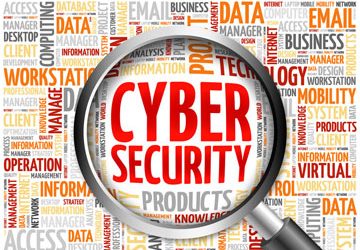The novel coronavirus (COVID-19) outbreak, declared a pandemic by the World Health Organization, is posing a major challenge for countries across the world. It is impacting almost every aspect of our lives and affecting business activity and global travel. With virtual meetings gaining momentum, video transcription services are growing in importance. While there is a lot of uncertainty about how things will play out in the coming days and months, there are certain things business can do to get ready to deal with COVID-19. Here are key recommendations from the World Health Organization (WHO), the Centers for Disease Control and Prevention (CDC), and other experts on making workplaces safe from the novel coronavirus and other infections:
- Ensure a clean and hygienic environment: As one of the ways that COVID-19 spreads is via contaminated surfaces, all desks, tables, workstations, door knobs, telephones, and other surfaces frequently touched by employees should be cleaned with disinfectant.
- Encourage hand-washing: Washing destroys COVID-19. Soap and water and hand-rub alcohol-based sanitizers should be provided and employees should be instructed to clean their hands often for at least 20 seconds. Besides staff, contractors and customers should have access to places where they can wash their hands. Ensure that handrub dispensers are regularly refilled.
- Promote respiratory hygiene: WHO recommends that employers make face masks and/or paper tissues available at the workplace for people who display cold symptoms or develop a cough. Promoting good respiratory hygiene can prevent the spread of the novel coronavirus.
- Encourage sick employees to stay at home: In case COVID- 19 begins spreading in the community, anyone with even a mild cough or low-grade fever should stay at home (or work from home). Companies also need to ensure that their sick leave policies are flexible and meet public health guidance, and that employees are aware of these policies.
- Develop a plan to deal with a case of suspected COVID-19: Businesses need to have a plan to identify persons who may be at risk of COVID-19, such as who have recently travelled to an area reporting cases, or other personnel who have conditions that put them at higher risk of serious illness (e.g. diabetes, heart and lung disease, older age). They must be supported and not discriminated against.
- Assess potential for remote working strategies: PricewaterhouseCoopers (PWC) recommends that businesses should consider how to manage disruptions to people and productivity due to an outbreak of COVID-19 in their community. In the event of such an outbreak, the health authorities may advise people to avoid public transport and crowded places. Businesses can ramp up their remote working capabilities to deal with this. Teleworking will allow the business to continue operating while keeping their staff safe. Teams would need to be securely connected and projects managed in a way that they move forward.
- Create an infectious disease outbreak response plan: The CDC says that all businesses should develop and be ready to implement strategies to protect their workforce from COVID-19 while ensuring continuity of operations. They should involve their employees in developing a flexible policy. Businesses should also share best practices with other businesses in their communities, chambers of commerce, and associations to improve community response efforts.
- Minimize face-to-face meetings: If important discussions are scheduled, consider whether a face-to-face meeting can be replaced by a video conference or a teleconference. Digital transcription service providers can ensure that virtual meetings are accurately documented. Recent reports say that several global companies have advised their employees to manage their projects through video conferences.
A report from Axios provided several instances of the increasing adoption of video conferencing and remote work since the virus spread:
- Video conferencing traffic in North America and Asia has doubled since the outbreak began, according to Kentik, a global provider of network analytics.
- To slow the spread of the disease now and prepare for the worst should offices be closed, companies are emulating Facebook and Twitter, and encouraging and even requiring their employees to work from home.
- Experts say that central offices and face-to-face meetings will become less important in the eyes of business leaders, and the focus will be on productivity instead.
Virtual meetings have increased the demand for work-from-home software (www.vox.com). Rising to the occasion, companies like Zoom, Microsoft, and Google have offered their software for free and are striving to ensure they can cater to the growing demand from users.
Many businesses are taking proactive measures for pandemic preparedness and response, safeguarding their employees and populations at large, while potentially averting losses to their bottom lines. State-of-the-art technology, business transcription services and other support systems are enhancing businesses’ communication capabilities and helping them manage their work as they deal with the impact of the coronavirus pandemic.




